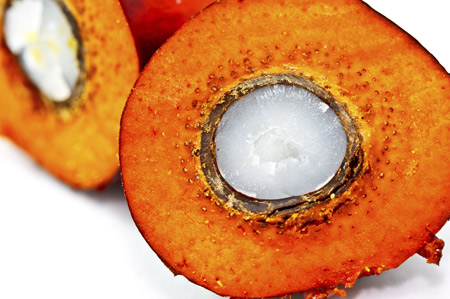Palm Seen by Mistry at Risk of Decline as Prices Drop to ’09 Low
Category: Oilseeds
 (Businessweek) – Palm oil may extend losses from the lowest level since 2009 until prices approach the cost at which growers in Asia produce the world’s most-consumed cooking oil, according to Dorab Mistry, director at Godrej International Ltd. Futures fell to the lowest close in more than five years.
(Businessweek) – Palm oil may extend losses from the lowest level since 2009 until prices approach the cost at which growers in Asia produce the world’s most-consumed cooking oil, according to Dorab Mistry, director at Godrej International Ltd. Futures fell to the lowest close in more than five years.
“We know from experience that during bear markets, the price tends to gravitate toward the cost of production,” Mistry said in e-mailed replies to questions, without giving a price target or timeframe. Private-sector estates in Malaysia and Indonesia have costs of about 1,500 ringgit ($475) to 1,600 ringgit a metric ton, Mistry said. Futures in Kuala Lumpur declined 1.8 percent to 1,976 ringgit.
Palm entered a bear market last month on swelling global supplies of edible oils, including what is set to be a record soybean harvest in the U.S. Futures also slumped as demand for biofuels missed expectations and as forecasters reduced odds for the onset of El Nino, which can disrupt supplies from Indonesia and Malaysia, the biggest producers. The decline will help curb global food costs, while hurting earnings at growers.
“The world is awash with vegetable oils,” said Mistry, who’s traded oils for more than three decades and addresses conferences on the outlook for supply, demand and prices. “So, it is not difficult to guess where prices will end up.”
Lower Prices
Forecasts made in June would have to be scaled down, wrote Mistry, who is scheduled to speak in Shanghai on Sept. 15. In June, he said in Mumbai that palm could climb to 2,800 ringgit by December should an El Nino occur from mid-August. He also said palm may trade between 2,300 ringgit and 2,500 ringgit for a few weeks, and risked rising to 2,600 ringgit if a dry period in Asia persisted.
Futures fell 7 percent in July and extended declines this month, dropping to 1,954 ringgit in intraday trade on Aug. 25, the lowest since March 2009. Prices lost 26 percent this year.
Indonesia and Malaysia account for 86 percent of global supplies, according to the U.S. Department of Agriculture. Costs of output at one large state-linked plantation in Malaysia are as much as 1,800 ringgit a ton, Mistry wrote.
“The absence of El Nino has been a huge disappointment for palm bulls,” said Mistry. “However, we must always remember — the seeds of the next bull market are sown in the current bear market.”
Rebound Forecast
UBS AG, Standard Chartered Plc and CIMB Investment Bank Bhd. are among forecasters seeing a price rebound, and futures trade higher in 2015 than for delivery in November, the most-active contract at present. Palm may rally to 2,200 ringgit to 2,400 ringgit late in the fourth quarter as users rebuild reserves and biofuel demand rises on cheaper feedstock, Ivy Ng, an analyst at CIMB, said in an Aug. 24 report.
In general, the cost of production ranges from about 1,300 ringgit to 2,000 ringgit a ton, depending on yields and age of trees of the plantation companies, Ng said by phone in Kuala Lumpur today. Palm oil may bottom at 1,800 ringgit, she said.
Prices may improve in the fourth quarter as inventories tighten, according to Abah Ofon, a Singapore-based analyst at Standard Chartered. Futures may recover to 2,200 ringgit over 12 months after dropping as low as 1,850 ringgit in the near term, UBS analysts led by Wayne Gordon said.
Global production of seven major oilseeds will be larger than forecast last month as consumption is set to trail output for a third year, Hamburg-based researcher Oil World said yesterday. Production will reach a record 507.2 million tons, 2.2 million tons higher than forecast five weeks ago and 18.1 million tons more than the previous all-time high last year.
‘Surprised Us’
“Palm oil production has also surprised us on the higher side,” said Mistry. Malaysia’s output climbed 6.6 percent to 10.7 million tons in the first seven months of the year from the same period in 2013, government data show. In June, Mistry said Indonesia may produce 30.5 million tons or more this year, as Malaysia’s output totals 19.7 million to 19.9 million tons.
Indonesia’s biodiesel usage may be 1.5 million tons to 2 million tons this year, missing industry expectations, Pawan Kumar, Rabobank International’s head of food and agribusiness research advisory, Southeast Asia and India, said on Aug. 12.
“A great amount of the current pain in the palm market has been inflicted by the failure of Indonesia to fulfill its proclaimed palm biodiesel mandate,” Mistry said. “When you promise the market something and then do not perform, the market punishes you.”




